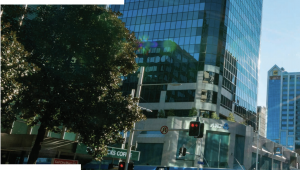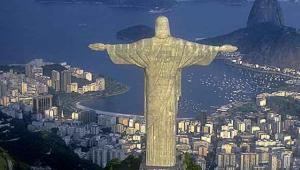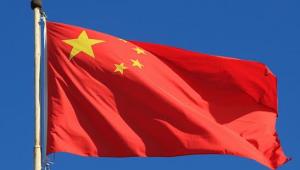25 February 2014
Population: 201 million
Government: Federal Republic
President: Dilma Rousseff
Official language: Portuguese
Proportion of urban population in total: 84.6%
Life expectancy: 71.25 years (men), 78.51 years (women)
Racial groups (2010 census): white (47.7%), colored (43.1%), black (7.6%), indigenous (0.4%, divided in to 305 ethnic groups)
Size: 8,459,417km2
Number of states: 26 plus Brasilia, the Federal Capital territory
GDP: R$4.4t (2012)
Expected GDP growth rate (2013): 2.4%
GDP composition by sector: agriculture (5.5%), industry (27.5%) and service (67%)
Total Foreign Direct Investment (FDI): US$65.3b (2012)
Inflation rate (August 2013): 6.09%
Currency unit: Brazilian Real (R$)
Stock Exchange: BM&FBovespa (third largest in the world by market value)
Labor force: 104.3 million
Unemployment rate: 5.3% (August 2013)
Unprecedented social, economic and structural transformations have reshaped Brazil over the last two decades. The 1990s saw the economy stabilize, a struggle to keep inflation under control, increased openness to foreign markets and strengthened democratic institutions. More recently, income transfer and social inclusion policies have seen at least 40 million Brazilians rise out of poverty and reach the middle class between 2003 and 2011. Today, the middle class represents 57% of the population — the lowest inequality index since the 1960s — and at least 13 million Brazilians will have reached middle-class status by the end of 2014, a total of 118 million people.
The strategy of the Federal Government has been to focus on the adoption of transfer income and welfare programs, and significantly increasing credit to stimulate consumption, with positive results in the social inequality and poverty indicators. For example, the northeastern states, historically the poorest of a federation composed of 26 in total, recorded family income growth of 42% between 2001 and 2009, compared with 16% in the southeastern region — the richest in the country. Such income distribution has helped poverty to fall 40% in the last decade.
Brazil spends nearly US$4,000 per person a year in government assistance programs to combat poverty — a level of spending that helps explain why, between 2011 and 2012, poverty dropped 7.9%, a percentage three times higher than that stipulated by the UN in its Millennium Development Goals. This track record places Brazil 13th out of 126 developing countries that invest to reduce poverty worldwide, well ahead of other developing nations such as China and India.
As a consequence, Brazil is among the 15 countries that have managed to reduce their deficits in the Human Development Index between 1990 and 2012, according to a survey released recently by the United Nations Development Programme (UNDP). The results of Brazil’s successful welfare policies — already replicated in several African and Central American nations — become clear when looking at data from the UN Food and Agriculture Organization, which estimates the number of hungry people in the country fell from 23 million between 1990 to 1992 to 13 million between 2010 and 2012.
The gains in social mobility, the growing middle class and the increase of credit have helped raise production levels, making Brazilian companies more competitive and creating jobs, strengthening Brazil's position as one of the largest economies in the world. The 5.7% growth in GDP in 2004 was followed by increases of 4% (2006), 6.1% (2007), 5.1% (2008) and a peak of 7.5% (2010). The Organization for Economic Cooperation and Development has stated that, without its income transfer policies, Brazil would need to grow four percentage points higher per year to achieve the same level of poverty reduction observed between 2002 and 2011.
At a time when 73.4 million young people aged 15 to 24 are unemployed worldwide, according to the International Labor Organization, Brazil has a more positive story to tell. Over the past 10 years, the rate of young Brazilians unemployed fell from 22.6% in 2002 to 13.7% in 2012. In addition, EY’s Worldwide Index of Women Public Sector Leaders shows that women — led by President Dilma Rousseff — now occupy 32.1% of government leadership positions in Brazil, ahead of many developed countries and behind only Canada, Australia, South Africa and the UK.
The dynamism of its economy has been increasingly reflected in Brazil’s growing international profile. According to data from the Ministry of Development, the Brazilian trade balance increased from US$107.6b in 2002 to US$465.7b last year. This results from stronger deals with traditional partners’ increased foreign trade, particularly with other developing nations, including Russia, India, China and South Africa. Last year alone, the influx of Foreign Direct Investment reached US$65.3b.
Brazil has also strengthened its role in multilateral organizations and is leading a group of emerging countries seeking a reform at the United Nations Security Council. Meanwhile, two Brazilian diplomats are leading highly relevant international organizations: José Graziano as Director General of FAO, the United Nation’s food agency, and Roberto Azevêdo as the same position at the World Trade Organization.
However, despite these stories of success, it is undeniable that there remain a number of challenges to overcome. Many Brazilian economists believe that income transfer and consumption stimulus policies are no longer sufficient to ensure sustainable growth in the future. After the GDP’s peak growth in 2010, the economy has been unstable, reflected in a weak growth of 0.9% last year, a rate largely caused by reduced industrial production and rampant inflation that is not yet fully under control.
And with the need for improved infrastructure urgent, the Federal Government is focusing on investment in roads, highways, ports and airports. Also on the radar are investments in infrastructure geared to the exploration of oil and gas in the “pre-salt” fields and the major events of 2014 (FIFA World Cup), 2016 (Olympic Games) and 2020 (Expo 2020). Other challenges include improving citizens’ access to sanitation systems and water treatment, health, education and urban mobility — demands considered essential for the population, very many of whom marched through the streets in massive protests earlier this year, calling for improvements in public services and stricter laws to combat corruption. In response to the demonstrations, the largest in 20 years, President Dilma Rousseff said policy-makers would respond positively: "The Government is listening to the voices for change.”
This feature was first published in the December edition of EY's Dynamics













